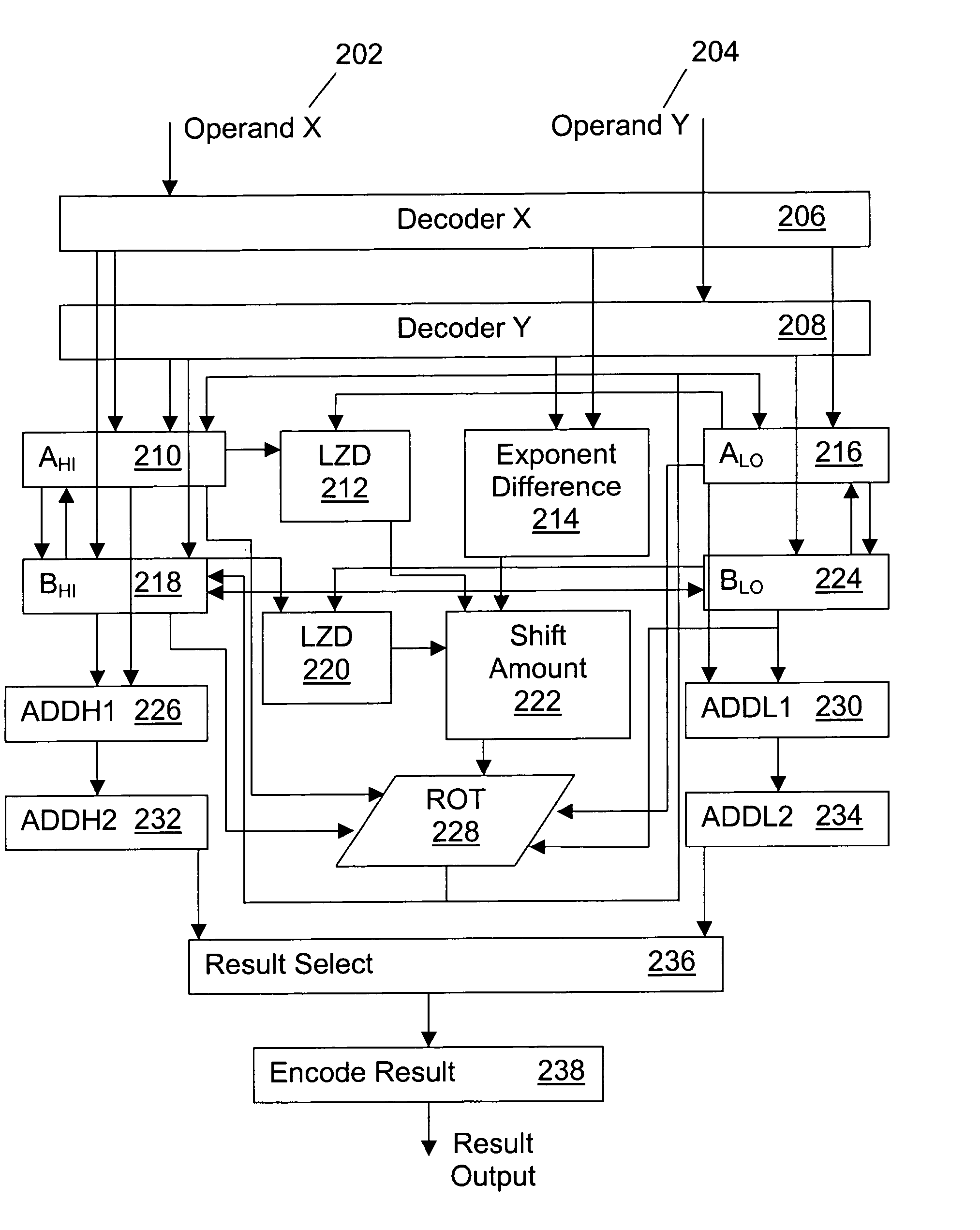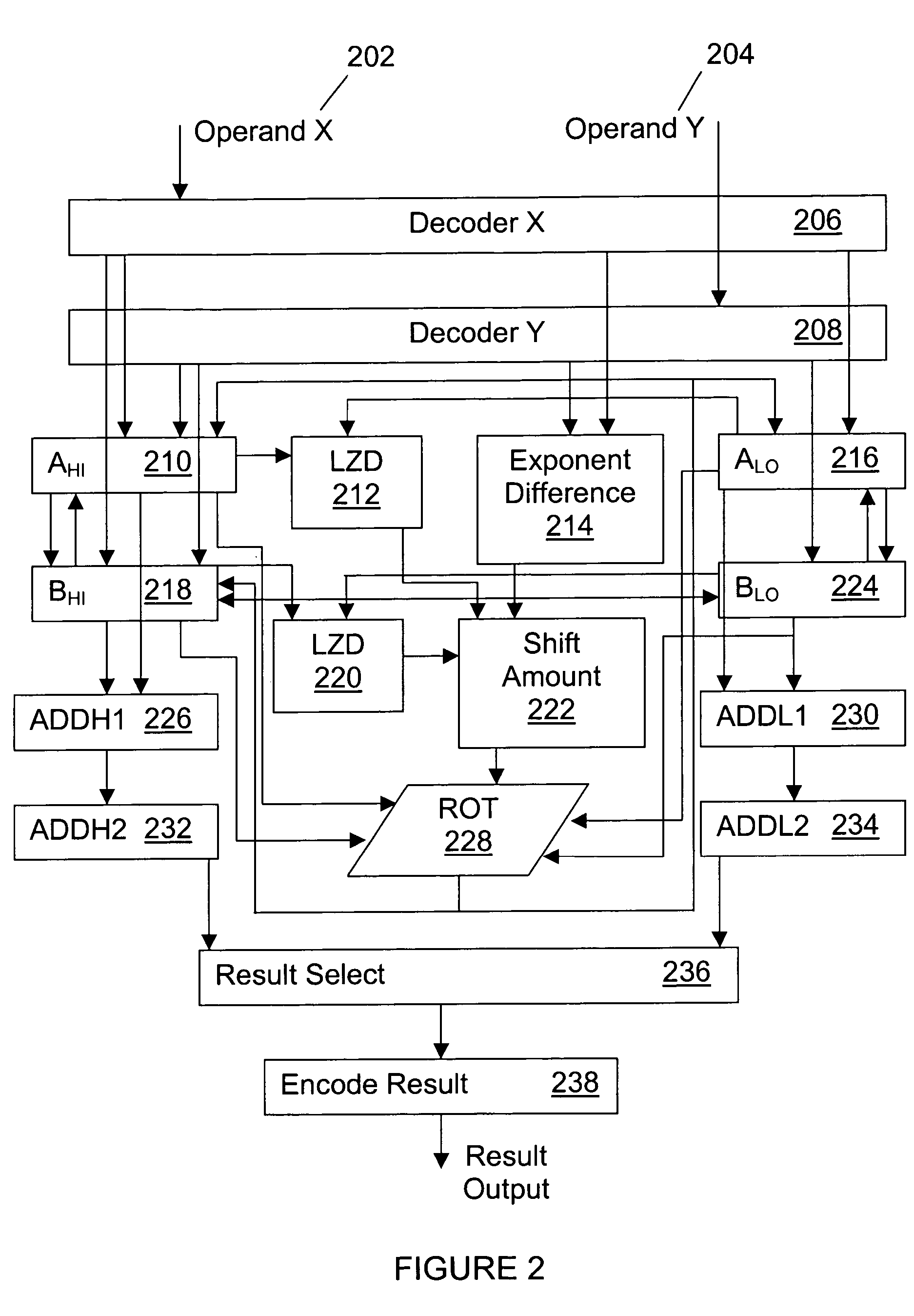System and method for performing decimal floating point addition
- Summary
- Abstract
- Description
- Claims
- Application Information
AI Technical Summary
Benefits of technology
Problems solved by technology
Method used
Image
Examples
case three
[0016] Case three, where D>Z(big), occurs when the exponent difference between the operands is greater than the number of leading zeros in the operand with the larger exponent. In this case, both of the operands must be shifted. The operand with the larger exponent, referred to as BIG, must be shifted left by Z(big) and the operand with the smaller exponent, referred to as SMALL, must be shifted right by D−Z(big). For example, if D>Z(big) then Scoef=(Xcoef*10Z)±(Ycoef*10(D−A)). The operation (Xcoef*10Z) can be realized by a left shift of Z(big) digits and the operation (Ycoef*10(D−Z)) may be realized by a right shift of D−Z(big) digits. This is referred to in FIG. 1, as “case 3.”
[0017] As shown in FIG. 1, under the column labeled “case 3”, at cycle 0, X is stored in the low part of the A register and Y is stored in the low part of the B register. During cycle 1, the X and Y coefficients are decoded and / or un-compacted into a binary coded decimal (BCD) format. In addition the value o...
PUM
 Login to View More
Login to View More Abstract
Description
Claims
Application Information
 Login to View More
Login to View More - R&D
- Intellectual Property
- Life Sciences
- Materials
- Tech Scout
- Unparalleled Data Quality
- Higher Quality Content
- 60% Fewer Hallucinations
Browse by: Latest US Patents, China's latest patents, Technical Efficacy Thesaurus, Application Domain, Technology Topic, Popular Technical Reports.
© 2025 PatSnap. All rights reserved.Legal|Privacy policy|Modern Slavery Act Transparency Statement|Sitemap|About US| Contact US: help@patsnap.com



